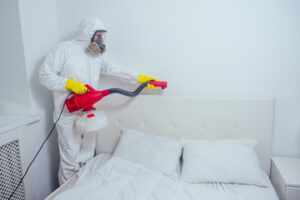Regular inspections of your dock can prevent major damage and save you money in the long run. Look for signs of splintering, rust on metal components, and stability issues.

Simple repairs like replacing loose boards or tightening screws are not difficult for homeowners with basic DIY skills. However, larger cracks or deteriorating wood should be repaired by professionals using marine-grade materials and construction techniques. Keep reading the article below to learn more about Dock Repair.
Leaks in the dock area can be an annoyance, but they’re also dangerous. The leaks can create a breeding ground for pests and debris. Gaps can also allow moisture to enter the facility and promote corrosion.
A recent incident at a Targa Resources dock in Galena Park, Texas, illustrates just how dangerous industrial chemical leaks can be. A valve malfunction caused the release of butadiene, a colorless and flammable gas that is toxic when inhaled. The incident required a coordinated response by emergency crews, but no injuries were reported and the spill has since been contained.
The concrete pits and steel walls that support dock levelers are prone to wear, cracking, and corrosion as they age. If these elements deteriorate, they may cause the leveler to be inoperable and pose safety risks for workers. This is why it’s important to have your warehouse dock levelers regularly inspected and replaced as needed by an experienced professional.
Many loading docks are equipped with sensors to detect incoming traffic from forklifts and trucks. If these sensors become misaligned or caked in dirt and grime, they will fail to function properly and could lead to accidents. To prevent these incidents, it’s a good idea to have your dock sensors regularly inspected and cleaned to ensure they are functioning correctly.
The floats that comprise the dock’s foundation can also suffer from wear and tear as they are exposed to the elements. If the floats develop holes, it’s important to have them repaired promptly to avoid any potential water leakage or flooding problems. This will also help to ensure that your floats are able to maintain their buoyancy in the rough marine environment.
If your dock floats are showing signs of damage, it’s time to replace them with high-quality commercial foam pads that will provide a tight seal between the truck and the loading dock. These pads are available in a wide range of sizes, thicknesses, and colors, so you’re sure to find one that is perfect for your dock. These pads are easy to install and can be purchased online or from a local supplier.
Cracks
Over time, wooden dock materials can become warped or cracked due to water damage. If the cracks are confined to certain areas, they can usually be repaired with plastic welding or silicone sealant. However, if the cracks extend to major load-bearing parts of the dock, they may need to be replaced to ensure the structural integrity of the dock.
Wooden docks are also prone to rot and mold growth. Inspecting the entire dock for rotting boards and soft spots is essential to avoid safety hazards. Moisture damage spreads quickly – ignoring one bad board may cause it to collapse and threaten the safety of people using the dock.
Another common problem is the deterioration of metal parts, including screws and bolts. Inspect all hardware for signs of rust, which can be caused by exposure to salt water or rough weather conditions. Loose bolts should be tightened with a wrench and treated with a rust preventive. If the hardware is severely rusted or missing, it may need to be replaced entirely. It’s also important to check for corrosion on the pilings and flotation systems. If the metal is corroded, it’s best to replace it with marine grade stainless steel hardware that is resistant to corrosion.
Floats can also be damaged by harsh weather conditions or by boat collisions. Inspect the floats regularly for signs of damage, such as visible cracks or erosion around the holes where they attach to the dock. If any floats are broken or severely damaged, it’s recommended to replace them with similar floats that are designed for use in saltwater and rough water environments.
If you’re planning to make dock repairs, it’s a good idea to have a checklist of all the tools and materials that will be needed. This will help avoid any delays during the repair process and ensure that all necessary steps are taken to ensure that your floating dock is safe to use. Some items that you should always have on hand during a dock repair project include basic hand tools, a plastic welding iron for polyethylene dock material and a silicone sealant.
Damaged Floats
Floating platforms in docks require regular inspection and maintenance to ensure that they remain safe to walk on. When these floating docks are exposed to natural disasters like storms, they can experience damage that might render them useless. Thankfully, these kinds of natural disasters are usually predictable and can be prepared for by implementing routine dock maintenance and preparing the right tools for the job.
For instance, if the structure of your floating dock is compromised by cracks, it’s important to have the required materials for repairs at hand before beginning work. These materials include basic hand tools, welding iron for polyethylene dock material & floats. It’s also advisable to wear protective gear such as slip-resistant shoes, gloves, goggles & a mask to prevent exposure to harmful substances. You should also work in a well-ventilated area since using chemical sealants & plastic welding can create toxic fumes.
Another sign of a damaged boat dock is the presence of large amounts of rust. Rust is caused by the interaction of salt water & metals which can damage the structure of your dock if it’s not properly maintained. To avoid this, you should regularly wash the metal parts of your dock, particularly those that are visible from the surface such as cleats & ladder handles. Moreover, you should also install anodes on your dock which will serve as sacrificial metals that will corrode instead of the main metal parts in your dock.
If your dock’s beams are rotting or damaged, it could lead to the collapse of the entire structure. To ensure that your dock remains stable, you should regularly inspect & repair the beams to prevent any further damages. For this, you should pay special attention to areas that are prone to issues such as the end of dock sections & the coupler pocket.
Another crucial element of boat dock preparation is removing any loose components like paddles, storage containers & removable railings & lightings. This will reduce the chance of these items becoming flying projectiles during a natural disaster & protect your people & boats from harm. Additionally, you should check the posttension or whaler cable system which tethers your dock to pilings below. Any signs of damage to these cables should be repaired immediately to prevent further deterioration of your floating dock.
Hardware
The metal components of a dock, including bolts, screws, and nails, are susceptible to corrosion in a marine environment. They should be regularly rinsed to remove excess salt, and treated with a protective coating to increase their longevity. It’s also important to use materials designed for dock usage, such as aluminum and galvanized steel.
In addition to rust and corrosion, metal parts can also suffer from wear and tear due to regular contact with water. This can lead to cracks or breakage. In these cases, it may be necessary to replace the parts or the entire dock.
A qualified contractor will inspect the hardware for damage and determine whether it is repairable. If the metal is exposed, it can be treated with a coating that prevents corrosion or replaced altogether. Similarly, any wooden parts that are in contact with the water should be regularly inspected and sealed to prevent damage.
When it comes to repairing the dock’s wood, the professionals will inspect it thoroughly for damage and rot. They’ll start by looking at the posts and any piers that are attached to them, as these are usually the most damaged. The professional will then look at the decking and railings, as well as the wood planks themselves to see if they are damaged or rotting. If any of them are, the professionals will remove them and install replacements that are suitable for the dock’s environment.
In addition to replacing the wood, the professional will likely need to apply a waterproof sealant to the new planks. This will protect them from water damage and ensure that they’re secure on the floating dock frame. Finally, the professional will need to make sure that any remaining water is draining properly from the dock to avoid any issues with flooding or structural integrity.
Whether to repair or replace a dock is a complex decision that requires careful consideration of the structure’s current state and future needs. Generally speaking, it’s more cost-effective to repair docks than to completely replace them, especially in the case of severe damage that compromises safety.

